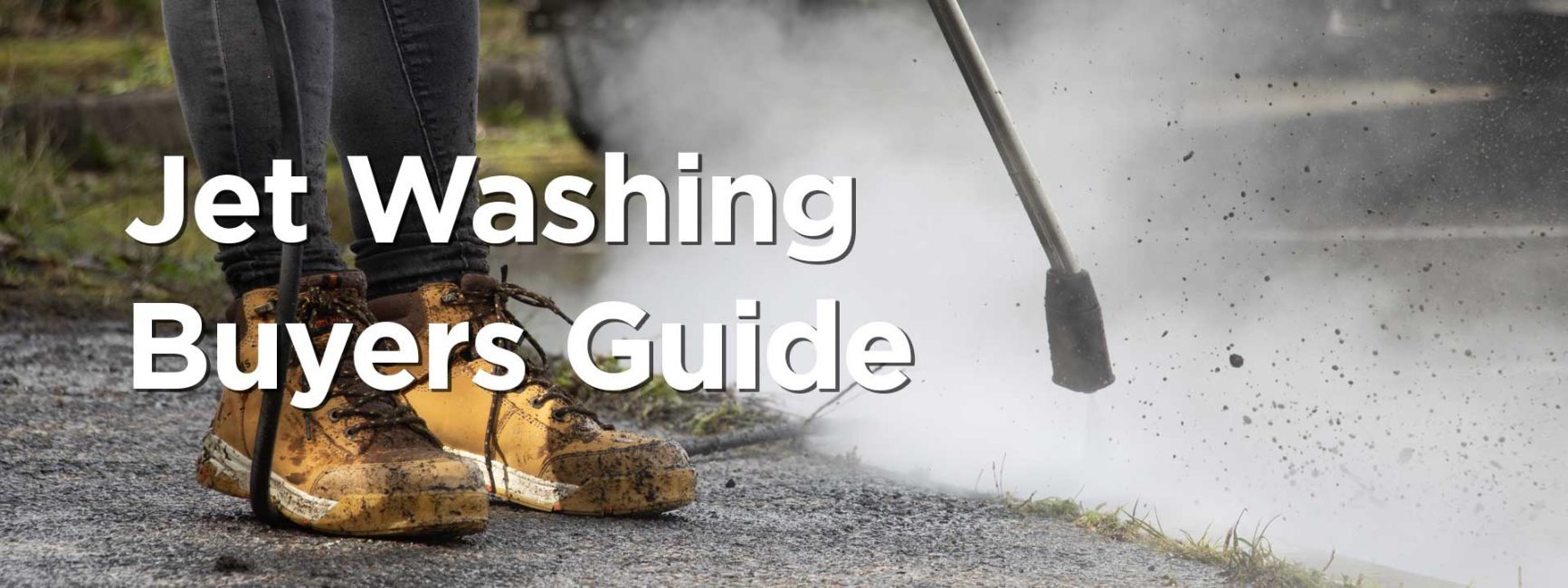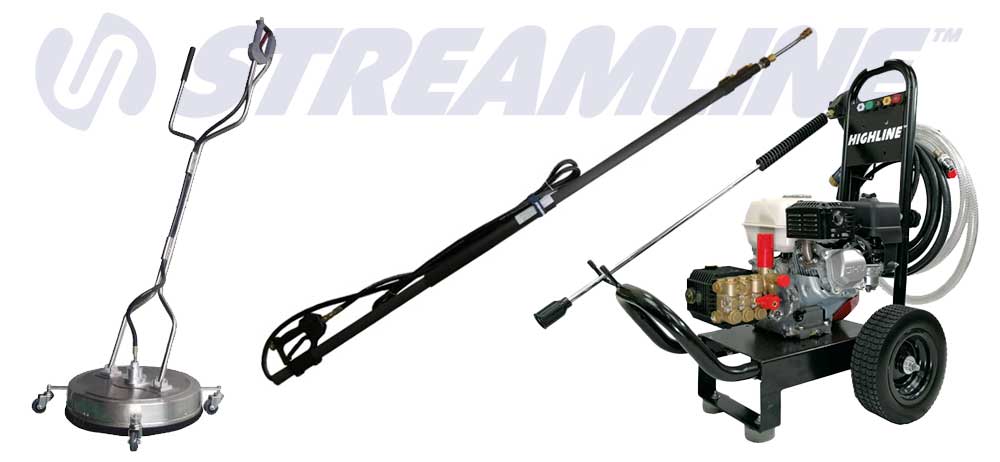Pressure Washer Buyers Guide
What To Look For When Buying A Pressure Washer
Here’s a Pressure Washer Buyers Guide to help you cut through the noise when buying a pressure washer for your business or home.
Pressure
The power of a pressure washer is gauged by its pressure, typically measured in Bar. Most models range between 110 and 275 Bar.
For everyday cleaning tasks like garden furniture, bikes, cars, and decking, a 110 Bar pressure washer is ideal and will be effective at removing dirt from these surfaces.
If you need a more robust cleaning power, such as for brightening patio slabs, a 130 Bar model is generally good enough. Professionals may opt for pressure washers up to 250 Bar or higher, as these will be effective at cleaning masonry and iron surfaces, but they may cause damage to cars and garden furniture.
Pressure Washer Hose Length
Pressure washer hoses typically start at around 3 metres but can extend to over 100 metres in higher-end models. Longer hoses are advantageous for reaching distant areas, such as the far corners of large swimming pools, or wall cladding and masonry.
However, in compact spaces, longer hoses can be cumbersome, prone to damage from kinking or snagging, and add weight to the washer. Hoses exceeding 10 metres are recommended only for users who regularly operate in expansive areas and truly need the extended reach.
Pressure Washer Lances
The lance, the extended pipe from the pressure washer trigger, delivers the water for cleaning. Longer lances facilitate reaching inaccessible areas without straining the user’s posture.
Variable pressure lances, also known as variable fan-jet lances, enable users to adjust the jet force from a concentrated point to a wider fan pattern.
Angled lances are suitable for cleaning beneath vehicles or garden furniture, while rotary jet lances, which spin while spraying, are effective for heavily soiled paving slabs but too powerful for cars or decking. High pressure hoses will need to be used with the more professional high pressure washers.
Auto Start/Stop Facility
An auto start/stop trigger at the end of the lance conserves water and reduces the operating time of the pressure washer.
With this feature, water flows when the trigger is pulled and stops when released. For users dealing with large spaces, a pressure washer lacking auto start/stop functionality could be inconvenient, requiring continuous water flow until reaching the cleaning area.
Pressure Washer Pump Type
The pressure washer pump, responsible for propelling water through the hose and lance, comes in three main types: composite, aluminium, and brass.
Composite pumps suit occasional use, usually 3 to 4 hours per month. Aluminium pumps offer increased durability and are suitable for regular or extended use. Brass pumps, designed for intensive use, are favoured by professionals. While composite pumps are the most economical, brass pumps are the priciest.
Pressure washing can be mildly addictive and seeing the results can be instantaneous. This video shows how satisfying it can be. Watch here.
Washer Systems Motor Type
Pressure washers are powered by either brushed, universal, or induction motors.
Brushed motors, though less common, are budget-friendly and suitable for DIYers cleaning cars or decking. Universal motors are compact, lightweight, and affordable, suitable for occasional use. Induction motors, known for their power, efficiency, and durability, are ideal for regular use.
Motor Cooling Type
Motors require effective cooling during operation to prevent overheating. Two cooling methods are prevalent: air-cooled and water-cooled.
Air-cooled models use fan-driven airflow for cooling, offering lightweight construction and affordability. However, water-cooled models, employing a water tank for cooling, provide superior efficiency and durability.
Pressure Washer Accessories
- Wash Brushes: Attachable to the pressure washer lance, wash brushes aid in cleaning vehicles, greenhouses, and conservatories.
- Patio Cleaners: Circular plastic hoods with a brush around the bottom edge, patio cleaners prevent splashing of dirty water during cleaning.
- Integrated Storage: Integrated storage compartments accommodate cables, detergent tanks, hoses, and lances, offering convenience for users with limited space or those frequently moving between tasks.
- Suction Hoses: Suction hoses enable drawing water from static sources like water butts or ponds, conserving water during smaller cleaning tasks.
- Detergent Tanks and Systems: Detergent tanks integrated into pressure washer systems eliminate the need for separate detergent sources, simplifying cleaning tasks while ensuring mobility.
- Pressure Washer Detergents: Although not essential for all cleaning tasks, pressure washer detergents enhance cleaning efficacy, particularly for stubborn stains, by dissolving dirt and grime for easy removal.
Streamline™ provide a huge range of pressure washers to professional cleaners who are looking for robust and longer lasting items for their professional window and jet washing businesses. You can see our range of pressure washers here.







